Insights
RCS marketing: What it is and how to get started
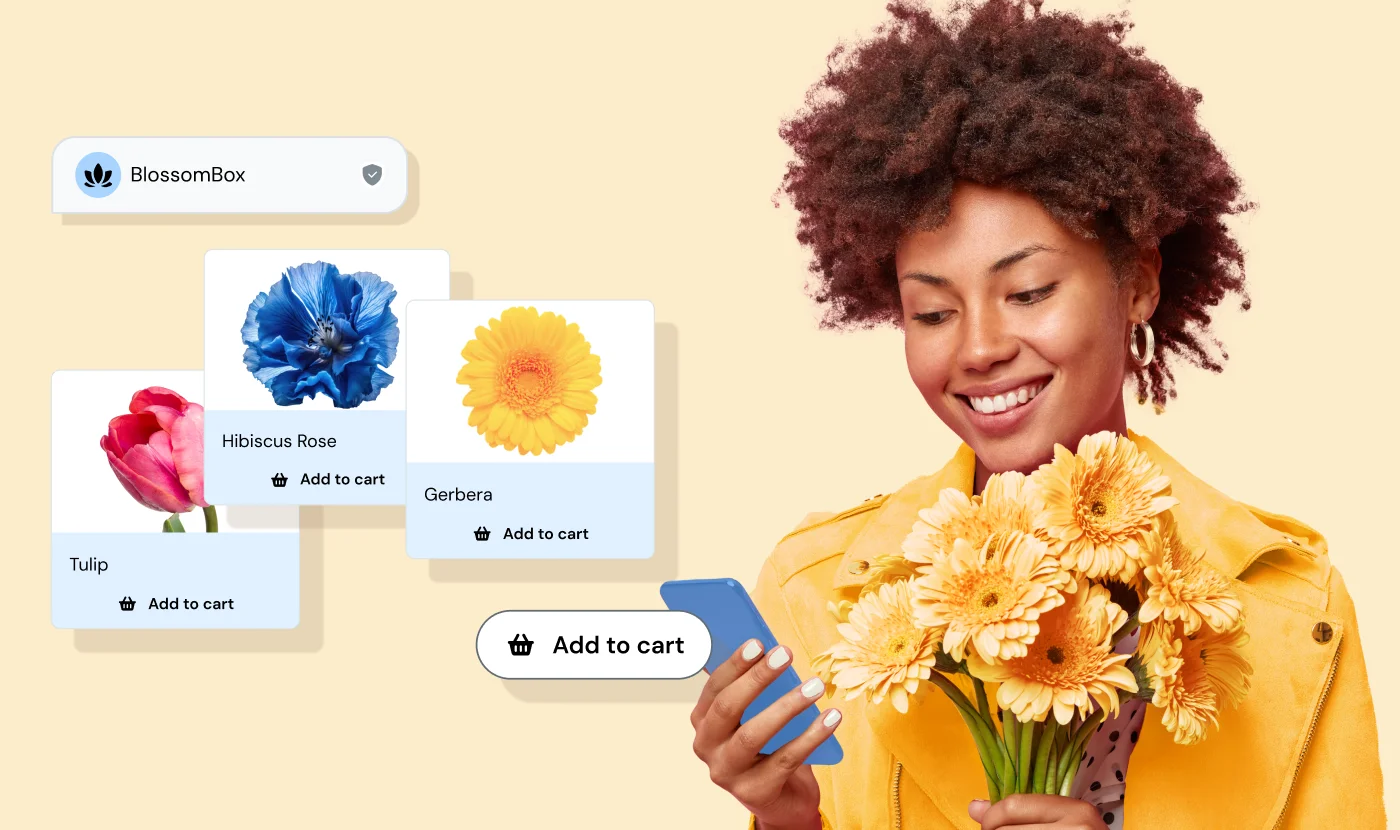
Insights

You might already be using mobile channels like SMS, MMS, WhatsApp, or others to have conversations with your customers. And you may be doing a great job at it! But what if we told you there’s another mobile strategy around that’s proven time and time again to help increase conversions and sales? It’s called RCS marketing.
Rich Communication Services (RCS) is a messaging protocol that was designed to replace SMS and MMS. It supports branded business profiles, rich media, and interactive elements all inside a smartphone’s native messaging interface (for an experience that includes clickable carousels, branded senders, tap-to-buy buttons, and more!).
In this guide, we’ll break down what RCS marketing is, why it matters for your omnichannel marketing strategy, and how to start using it in your campaigns.
RCS marketing is the practice of using RCS for Business (previously called “RCS Business Messaging” or “RBM”) to send engaging, interactive messages to customers’ native text messaging inboxes. It works on both Android and iOS (in some markets), but it’s not the same as Apple’s iMessage/Apple Messages for Business.
Unlike SMS and MMS, which are limited to plain text, basic media, and limited branding opportunities, RCS lets businesses include:
In this quick video, Sinch’s RCS Product Manager Miriam Liszewski breaks down how RCS offers interactive features like carousels, suggested replies/actions, images, and more.
SMS is a staple in business communication, relied upon by businesses worldwide. But it has some limitations, like messages being capped at 160 characters.
Meanwhile, RCS for Business messages always come from a branded, verified sender. Some implementations of RCS keep the character limit, but richer implementations support longer messages, images, buttons, and interactivity. And that can make a big difference in conversational marketing!
Watch this quick demo showing how RCS takes SMS marketing campaigns to the next level.
Here’s a quick table that compares RCS and SMS for your marketing endeavors:
| RCS marketing | SMS marketing | |
| Reach | RCS has over one and a half billion active users worldwide. | Every mobile phone on the planet can receive SMS (that’s 7.3 billion people!). |
| Message format | Supports rich media like images, videos, and carousels. | Plain text; no images can be included (but you can send images and videos with MMS marketing). |
| Open rate | Very high – 90% of rich media messages are opened within 15 minutes. | Very high – historically has had an open rate of over 90%. |
| Interactivity | Quick-reply buttons, in-app wallet integration, ability to include engaging multimedia, and more. | 89% of consumers want two-way conversations via messaging channels, and SMS offers a path to achieve this. |
| Branding opportunities | All messages include a brand logo and verified sender information. | Some countries allow Alpha Sender IDs. Only available in select markets and rules differ about when these can be used. |
| Analytics | Offers handset delivery receipts, open rates, and read receipts. | Certain SMS marketing tools can offer insights into basic delivery rates, including how many messages were delivered, how many failed to be delivered, and other analytics depending on your provider. |
Some people think that RCS is a replacement for SMS, but we think of it as complementary. When you send RCS via a provider like Sinch, they can automatically be sent as SMS or another messaging channel if RCS isn’t available. That way, you never lose reach.
“With RCS, your messages are branded with your logo front and center, so customers get much more brand exposure each time they hear from you… [They’ll] know it’s really you, so they’ll feel confident tapping the links you send them and taking the actions that you want them to take.”

RCS gives marketers a way to send branded, high-performing campaigns straight to the native text messaging inbox. And with nearly two decades of development behind it, we’re past RCS being “experimental.” The benefits speak for themselves. Here’s what marketers using RCS are experiencing.
RCS for Business messages show your logo, brand name, and a verified checkmark, so customers know it’s really you. That consistency builds trust and keeps your brand front and center.
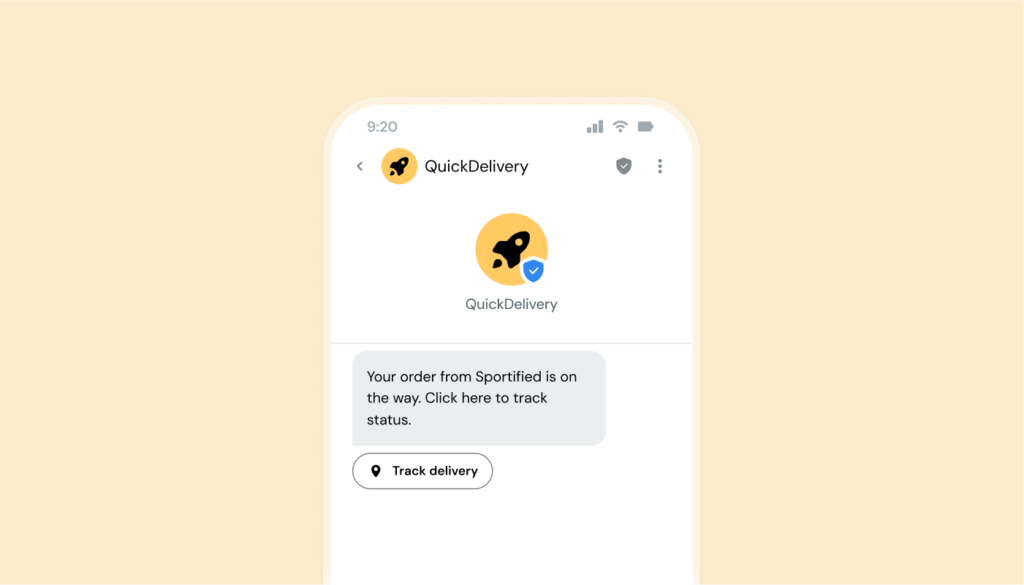
RCS messages regularly achieve open rates above 90% and read rates over 70%. That’s well above what many channels deliver – and it means your messages are actually being seen.
RCS already has more than one and a half billion monthly active users, and all modern Android devices ship with Google Messages as the default texting app.And with Apple actively rolling out RCS support in different markets, your potential audience is only getting bigger.
Brands running RCS campaigns see click-through rates up to seven times than SMS. And when the message is timely and targeted, conversion rates can top 80%!
RCS holds attention for up to 45 seconds. That’s plenty of time to tell your story, show off a product, or guide someone through a decision without needing a second message.
Retail brands using interactive RCS campaigns have reported 10% higher average order values compared to other channels. More context, and better timing, often means bigger baskets.
If you’re already doing SMS marketing, upgrading to RCS can be super straightforward. And that’s because you can send RCS when it’s supported by an end user’s device, and then choose for your messages to automatically be sent as SMS (or another messaging channel) when it isn’t.
When you send RCS via Sinch Conversation API, you can easily add other messaging channels (like WhatsApp, Telegram, and more than a dozen others). That means you can use one API to provide consistent messaging experiences, without juggling separate systems. You can also use a ready-to-use business messaging platform like Sinch Engage which has native messaging integrations with software like Salesforce, HubSpot, and Shopify.
Like any other form of marketing, you should have a user’s consent before sending them RCS messages. This way, you’re always sending communications to people who want to hear from you.
Once you have this, it’s time to focus on how to make RCS work harder for your brand. Here are a few best practices.
RCS offers countless opportunities to engage your customers with a great mobile marketing campaign. Here are six proven ways RCS works for marketing, with examples from brands that saw great results!
Picard used RCS to guide customers through creating holiday menus. Based on their responses, users got personalized messages and a direct link to shop.
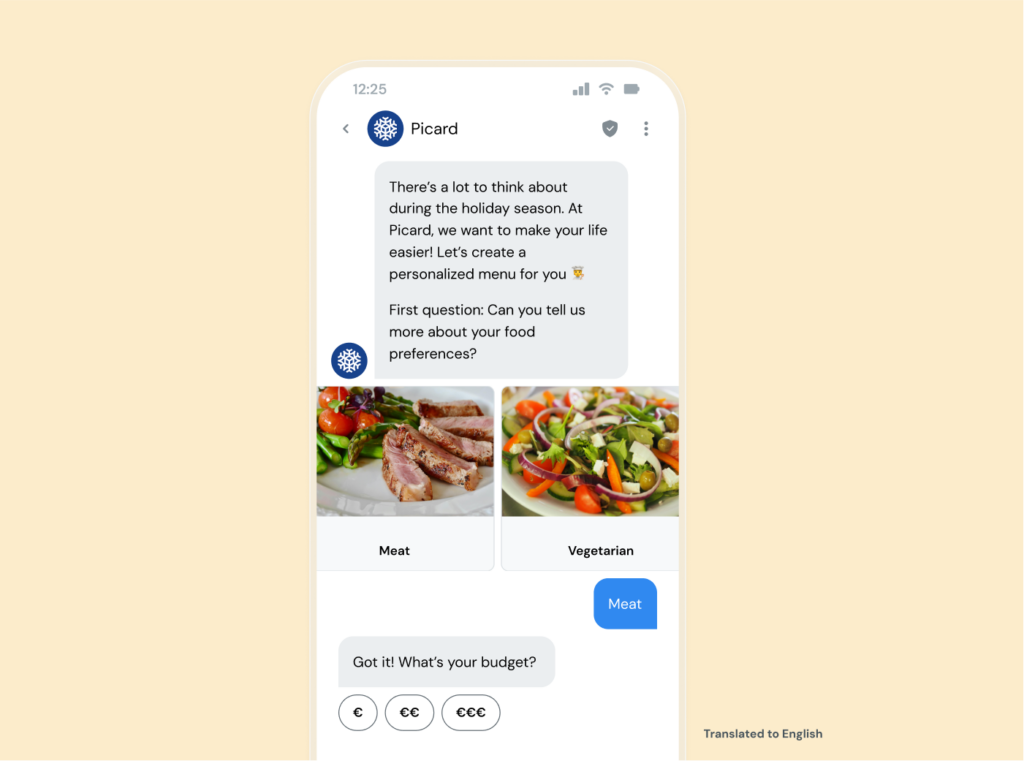
The results? Their RCS campaign saw a click-through rate 3x higher than that of Rich SMS, and 10% more website redirections than Rich SMS.
RCS lets you deliver time-sensitive, location-specific promotions. Brands can send offers based on a customer’s current location. This is perfect for restaurants, gyms, or local retailers running flash deals.
One of the most promising aspects of RCS for marketers is its ability to help with storytelling. Instead of just telling people about your products, RCS makes it easy to show them in action.
For instance, ATOL, a chain of opticians in France, launched a personalized shopping flow for selecting new eyeglasses using RCS. Customers answered four quick questions and received a product recommendation and offer.
The results: Five times more clicks and 99% more in-store bookings than Rich SMS.
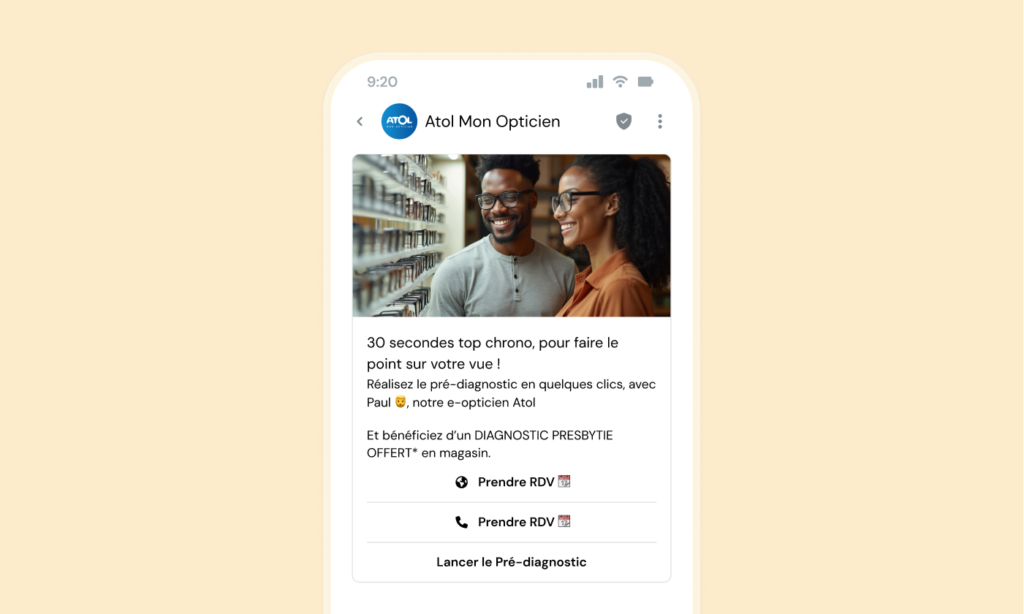
RCS offers retailers the unique opportunity to recreate in-person shopping experiences.
Take Printemps, a French department store, for example. They used RCS to replicate personal shopping on mobile for Father’s Day. Customers received gift suggestions based on preferences and budget.
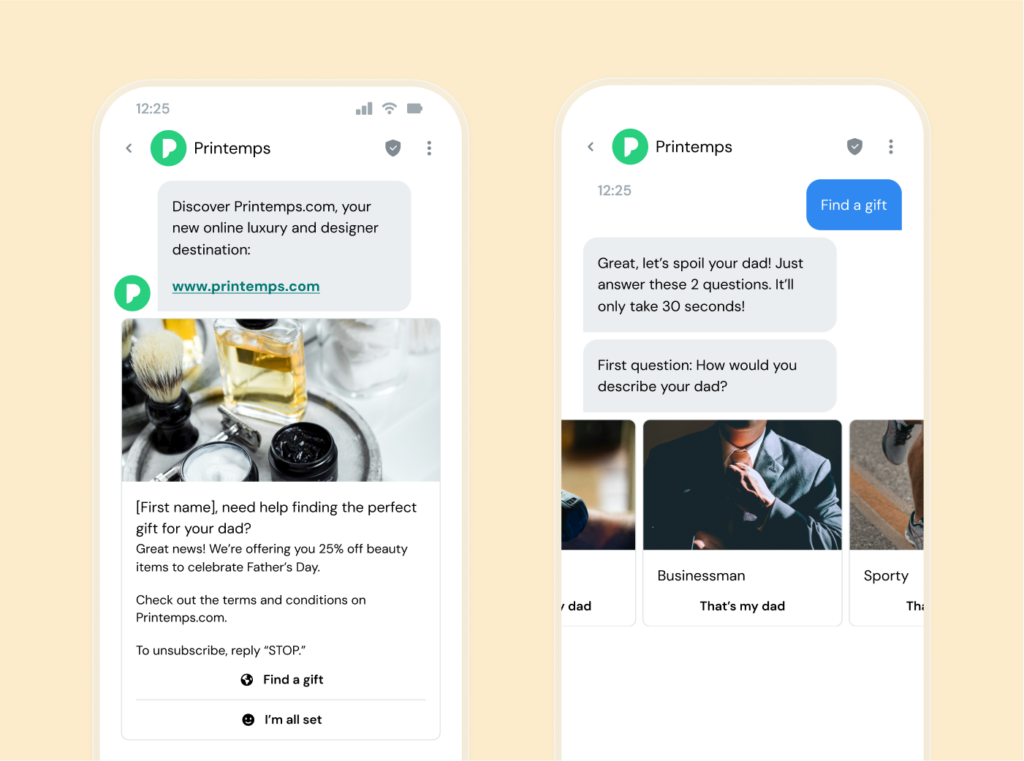
Their strategy led to an experience with a three times higher click rate than Rich SMS.
RCS is especially helpful for retailers that want to inform customers about early access to sales, give real-time stock updates, or to remind them about their abandoned cart during high-traffic shopping periods like Black Friday and Cyber Monday.
A great example of this comes from Citadium, a fashion retailer that aimed to boost revenue during Black Friday. They switched from SMS to RCS for Black Friday, targeting loyalty members with personalized discounts.
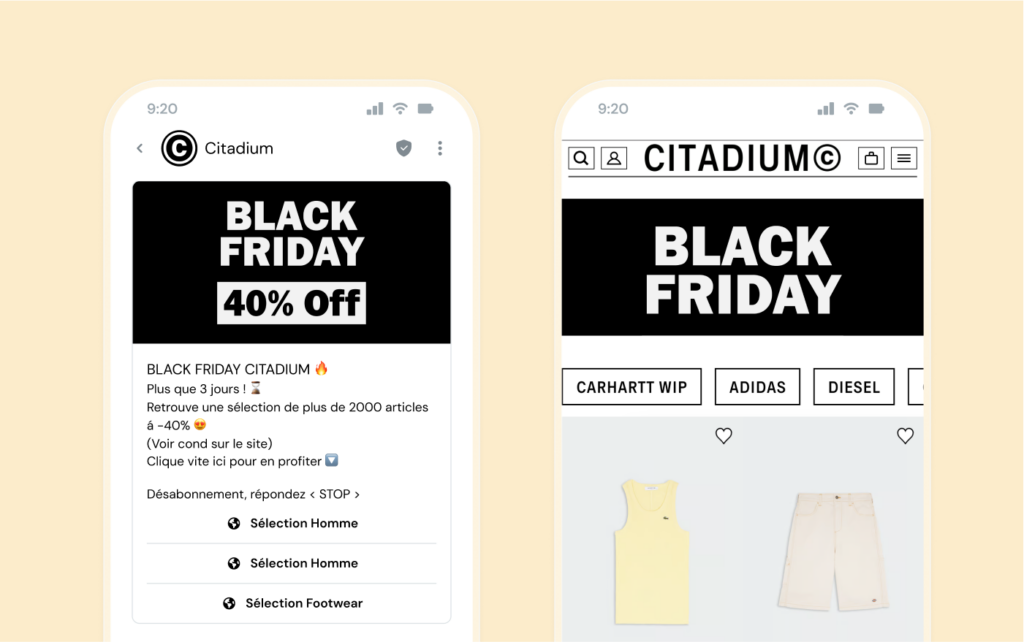
Citadium’s results: They saw a 85% engagement rate and a 22% increase in conversions.
You probably already send your customers an email newsletter. And there’s still a place for using email – but if you’re looking to promote an especially time-sensitive sale or have your message read more quickly, it could be a good idea to explore RCS.
Just a few days before Christmas, Micromania-Zing, part of retail giant Game Stop, used RCS to send last-minute holiday offers to customers who hadn’t bought gifts yet.
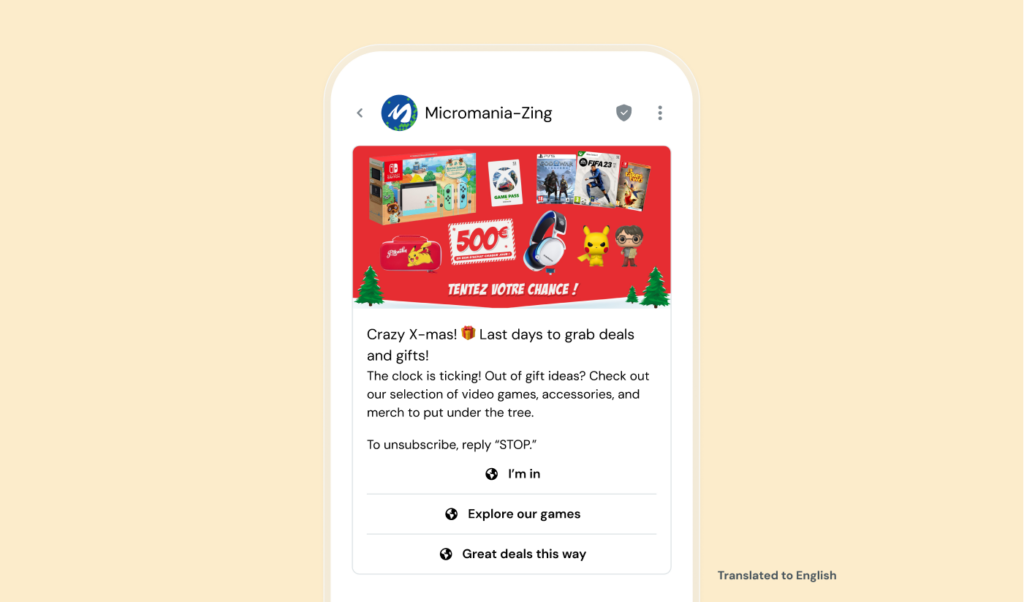
The results were impressive: an 86% increase in read rate as compared to their email newsletter, and a 120% increase in web redirections versus Rich SMS.
Already we see more and more brands adopting RCS, integrating it into their omnichannel campaigns, and using it to drive measurable campaign results. As we head deeper into 2025, here are the trends defining what’s next.
“RCS lets companies connect with customers in a way that feels personal and trustworthy. Having a verified, interactive message helps brands stand out and build real relationships. In 2025 and beyond, this level of engagement will be the standard for how brands communicate.”

Now that you know the ins and outs of RCS marketing, isn’t it time to make it a part of your strategy?
RCS helps businesses reach customers where they already are, deliver messages they can trust, and create great customer experiences that drive action. From their first purchase and beyond, it supports the entire customer journey in a way that’s branded, interactive, and built for results.
Not sure how to make the case to your team? We got you. Our RCS business case guide will walk you through ROI, tech lift, and quick wins to bring RCS marketing into your organization.
Or, if you’re ready to set up your RCS strategy today, get in touch. Our team is excited to help you take your conversational marketing strategy to the next level!